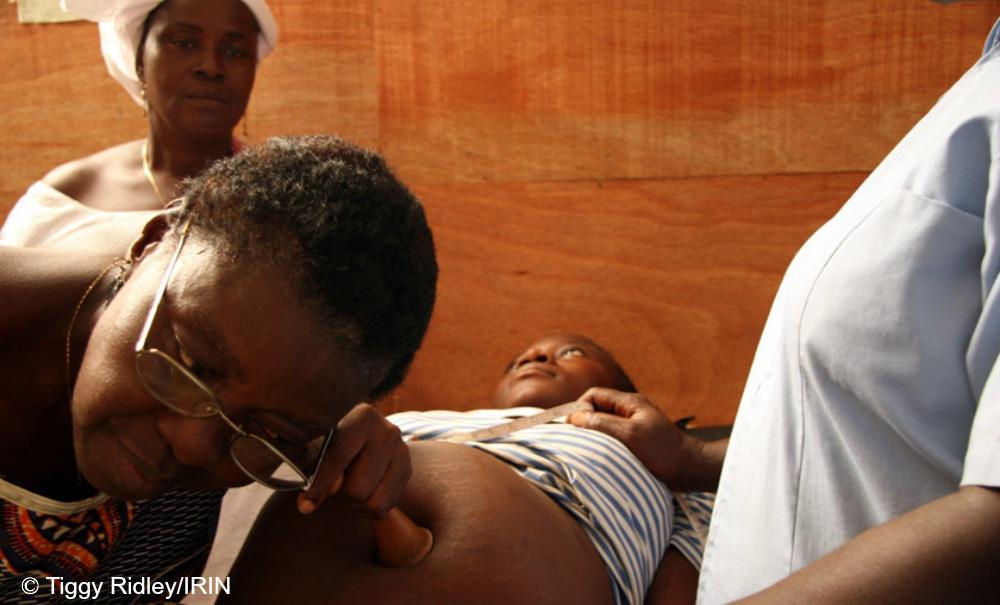SADC to harmonise TB treatment, cross-border referrals


Health Minister Dr Aaron Motsoaledi made the announcement at a regional summit yesterday.
Motsoaledi also announced that South Africa will test 500 000 miners for TB using part of the more than R3 billion recently awarded to it by The Global Fund to Fight AIDS, TB and Malaria.
SADC countries will also adopt regional patient tracking and referral systems to make ensure patients can get care no matter where they are.
“We need to know who is it that has TB within SADC and where are their families,” said Motsoaledi. “We also need to know who refers to who and who takes responsibility for the patient.”
Deputy President Kgalema Motlanthe said the meeting was an opportunity to put “meat on the bones” of the August 2012 Southern Africa Development Community’s (SADC) Declaration on TB in the Mines.
The declaration is a response to rates of TB on South Africa’s mines that are 10 times’ worse than the World Health Organisation emergency levels, according to Patrick Osewe, the World Bank’s sector leader on human development.
Proactively testing and treating TB in miners could cut TB rate in the sector by 60 percent in 15 years, according to Osewe
As part of the declaration, SADC countries have pledged to establish independent mining ombudsmen to handle health complaints and to classify TB and silicosis among miners as occupational diseases.
[quote float=”right”]”Proactively testing and treating TB in miners could cut TB rate in the sector by 60 percent in 15 years”
Countries also committed to aligning their HIV, TB and silicosis treatment regimens to facilitate treatment for the 40 percent of miners in South Africa that the World Bank estimates are from neighbouring countries.
Traditionally, miners have faced treatment interruptions when moving between the mines and home – and this is also true for the 60 percent of miners who are native South Africans, cautioned Motsoaledi.
The creation of regional databases and tracking systems are ambitious goals.
Currently, the Ministry of Mineral Resources is still attempting to trace some former mine workers using records kept by the TEBA – the country’s historic recruitment agency for the mine.
Meanwhile, questions about the quality of the country’s HIV statistics have led the Department of Health to propose the introduction of unique patient identification numbers. – Health-e News Service.
Author
Republish this article
This work is licensed under a Creative Commons Attribution-NoDerivatives 4.0 International License.
Unless otherwise noted, you can republish our articles for free under a Creative Commons license. Here’s what you need to know:
You have to credit Health-e News. In the byline, we prefer “Author Name, Publication.” At the top of the text of your story, include a line that reads: “This story was originally published by Health-e News.” You must link the word “Health-e News” to the original URL of the story.
You must include all of the links from our story, including our newsletter sign up link.
If you use canonical metadata, please use the Health-e News URL. For more information about canonical metadata, click here.
You can’t edit our material, except to reflect relative changes in time, location and editorial style. (For example, “yesterday” can be changed to “last week”)
You have no rights to sell, license, syndicate, or otherwise represent yourself as the authorized owner of our material to any third parties. This means that you cannot actively publish or submit our work for syndication to third party platforms or apps like Apple News or Google News. Health-e News understands that publishers cannot fully control when certain third parties automatically summarise or crawl content from publishers’ own sites.
You can’t republish our material wholesale, or automatically; you need to select stories to be republished individually.
If you share republished stories on social media, we’d appreciate being tagged in your posts. You can find us on Twitter @HealthENews, Instagram @healthenews, and Facebook Health-e News Service.
You can grab HTML code for our stories easily. Click on the Creative Commons logo on our stories. You’ll find it with the other share buttons.
If you have any other questions, contact info@health-e.org.za.
SADC to harmonise TB treatment, cross-border referrals
by lauralopez, Health-e News
March 26, 2014



